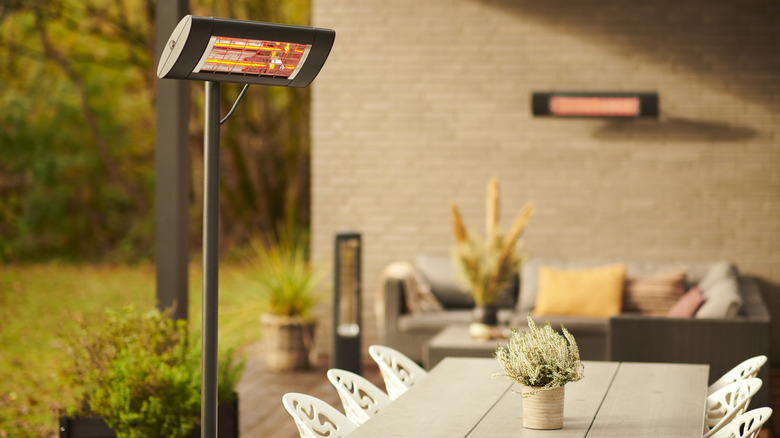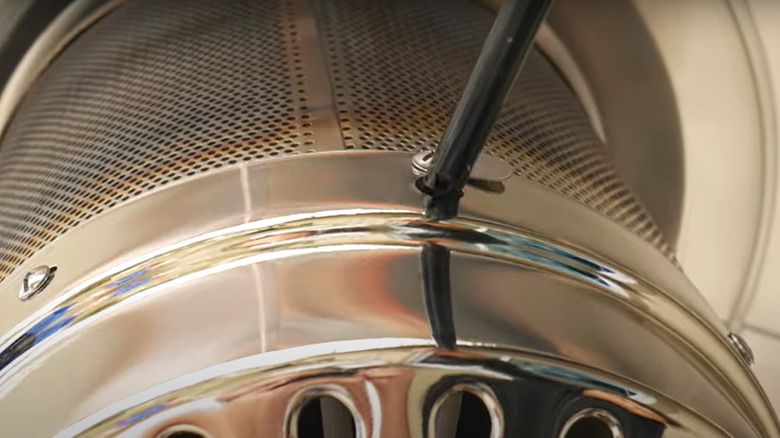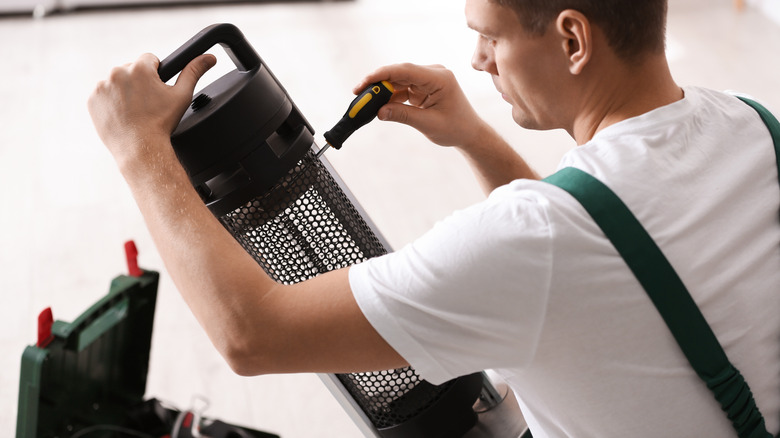Why Your Patio Heater Isn't Starting
Heaters are a popular addition to outdoor spaces, especially patios that double up as workspaces, providing warmth and comfort during chilly evenings. However, it can be frustrating when your patio heater refuses to start right, and you're ready to kick in the evening with drinks wrapped in a blanket. While a non-starting patio heater is your call to begin a tryst with troubleshooting, make sure your patio heater — whether gas or electric — is turned off to eliminate all possibilities of getting burned.
Surprisingly, despite involving simple mechanisms, there are plenty of things that can go wrong with propane heaters. Inadequate fuel supplies, faulty ignition devices, or dirty components like thermocouples are some of the most plausible reasons why your propane heater malfunctions. But they can be easily dealt with by performing regular cleaning and maintenance. As for their more complex, albeit less powerful, electric counterparts, a non-starting performance can often be attributed to faulty wiring, which necessitates replacement.
Common reasons for gas heater malfunctions
Before you set about troubleshooting your gas patio heater, ensure it has a sufficient fuel supply and the regulator is turned on. Also, check for any gas leakages or faulty valves that may be inhibiting its supply. If all looks good, try lighting your heater with a lighter or a matchstick to see whether it starts. If your heater lights up, you are probably dealing with a faulty igniter, and replacing it will put you out of your troubleshooting misery.
However, if the ignitor isn't at fault, you must look over your thermocouple — a safety rod connected to the valve, located between the ignitor and the pilot light. Being an outdoor fixture, patio heaters and their thermocouples accumulate a lot of dirt and dust, with many becoming homes to pests and insects. Such debris and rust build-up may inhibit the gas supply, preventing the heater from lighting. Cleaning the heater's burner using compressed air should get it going, while the safety components can be cleaned using a straw brush or a pipe cleaner.
Troubleshooting electric heaters
Dealing with non-functioning electric patio heaters can be tricky. The first step is to confirm there are no plug-in issues like a loose power cord or wire connection. If the answer is yes, you might want to contact a professional. But if the wiring is firm, ensure that it isn't unduly corroded or damaged. Like their gas brethren, electric heaters are exposed to nature's vagaries, accumulating dust and dirt on their surfaces, and matters can worsen if they get deluged with rodents or bird nests. Moreover, over time, the heater and its wiring components suffer immense wear and tear, which can result in frayed wire linking, damaged insulation, and corroded components. Under such circumstances, replacing any faulty wires is the only option.
However, if all is well with the wiring, it's a good practice to check whether the fuse is functioning well. A common telltale sign of a blown fuse is the darkening of the fuse glass or a gap in the wire, meaning it's time for a replacement. Unless you are experienced with electrical repairs, it is ideal to seek professional help when dealing with electric heaters to ensure your safety, and your patio heater's longevity.


